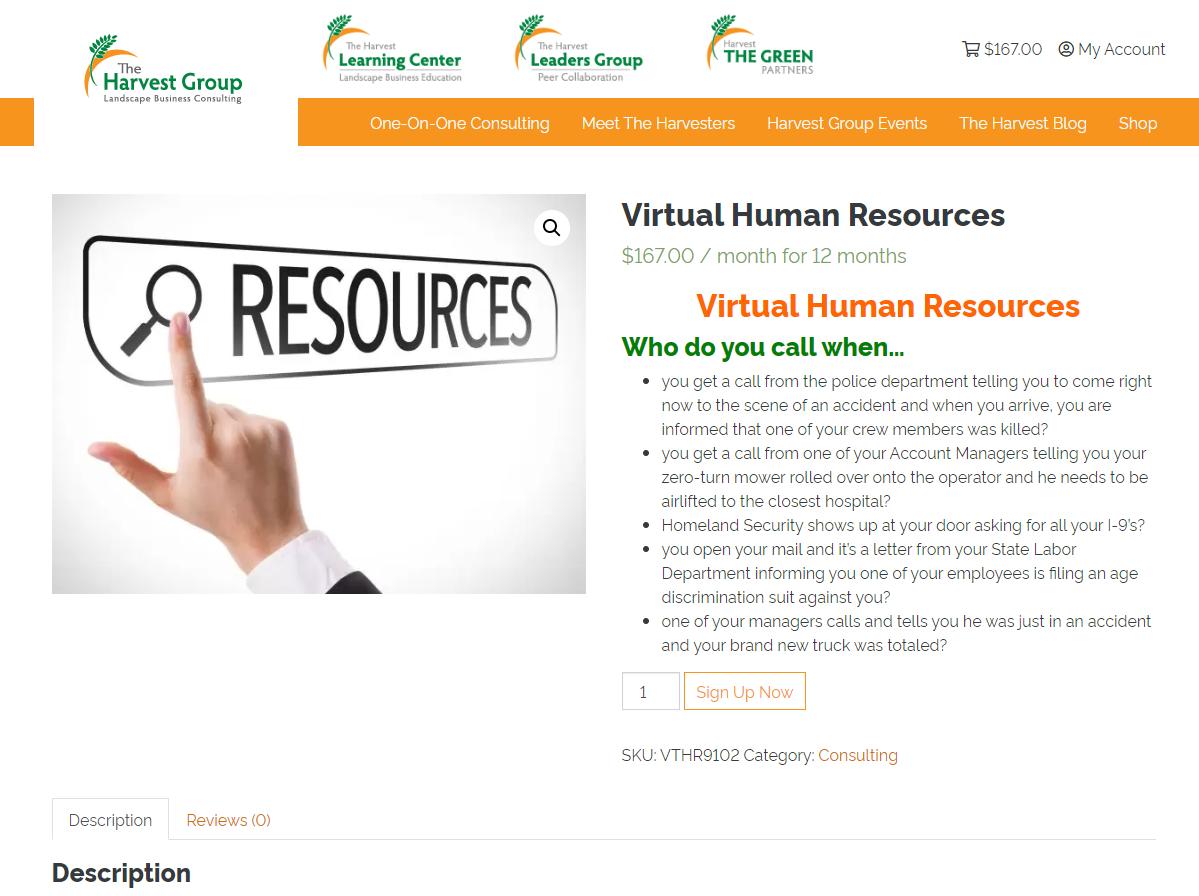
Human Resources File System Guidelines
Steven Cesare, Ph.D.
A landscaper from Michigan called me the other day to talk about being overwhelmed with all of the paperwork generated by Human Resources, and how the company can get more organized and efficient. I naturally concurred with the problem, process, and desired outcome that if the company does not manage the paperwork, it will soon be buried by it. I suggested the standard three-step system for managing Human Resources files.
Personnel File. Every employee must have a personnel file designed to contain job-related information capable of being reviewed by managers, supervisors, and authorized staff. Examples of documents that should be included in this file are as follows: job application; job description; selection test or interview results; acknowledgment forms (e.g., Employee Handbook, Confidentiality, Arbitration Agreement); driver’s license with photograph;, official DMV driving record and proof of auto insurance; Uniform Reimbursement Acknowledgment; Issuance Forms (e.g., cell phone, vehicle, equipment, computer); training records; performance evaluations; awards and honors (e.g., letters of commendation or recommendation); letters of reprimand or other disciplinary correspondence; Payroll Status Change Forms (e.g., change in salary, tenure, deductions, job title, promotion); Personnel Information Change Form; time off requests; Termination Form; and Severance Agreements.
Confidential File. Every employee must also have a separate confidential file that stores all personal information that could conceivably serve as bias against the employee. Examples of documents that should be included in this file are as follows: EEO information (e.g., Visa documentation); all information related to health (e.g., medical, dental, vision, LTD, life) insurance benefits; workers’ compensation records (e.g., reporting forms, investigation notes, status/release forms); 401(k) payments, loans, and hardship statements; W-4 Form; wage collections, garnishments, and any additional payroll deductions; physical examination results; drug testing results; FMLA documentation; disability leave information (e.g., short-term, long-term, permanent); sick leave documentation; emergency contact information; background check information; Direct Deposit authorization; investigative files for harassment or discrimination claims; grievance process documentation; unemployment insurance documentation; and reference check information
I-9 Forms. Though not required by federal law, it is strongly recommended that all I-9 Forms be kept away from either the employee’s Personnel File or his/her Confidential File, in separate three-ring binders, one for active employees and another for inactive employees.
To preserve file integrity and minimize the potential for bias, discrimination, or grievance, it is strongly recommended that the Personnel Files and Confidential Files for each employee be stored in separate file cabinets, or separate file drawers; never with both files for the same employee kept back-to-back in the same file drawer.
If you would like basic access to my human resources expertise, simply take a look at my affordable offering here: View Offer
Check Out Harvester Steve Cesare’s
NEW OFFERING!
Harvest Group Partners
Click the icon below to download the Harvest Group Mobile app!
What do you want to learn more about?
The Harvesters want to know what topics you would like to see us discuss. Click below to submit your ideas!





